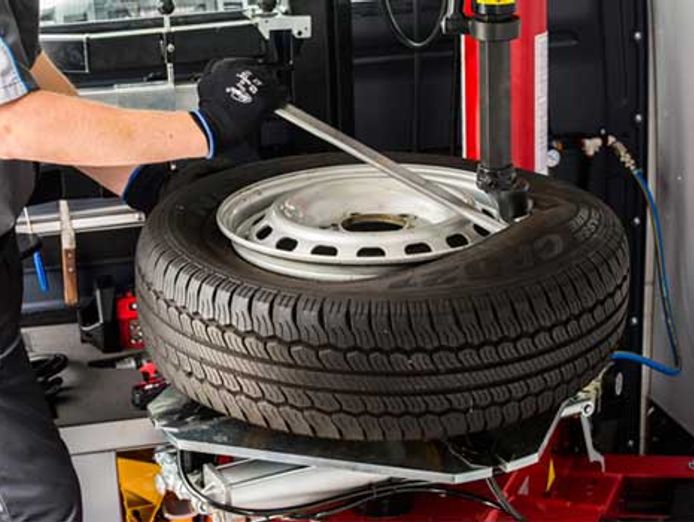Tire patches are a huge money maker for auto shops. They don’t require much labor, and the cost of a patch is really low compared to most other auto parts.
But what is a good price to pay to get a tire patched? Well, that depends. If you patch the tire yourself, expect to spend $6.00. If you take it to the shop, you’re looking at spending anywhere between $10-$40, depending on the situation.
Patching tires yourself is always everyone’s first instinct, since the cost is so low. But many people are deterred when they find out they can’t, due to any number of reasons. Deciding when to do it yourself, versus taking it to the shop is what we’ll explore in this article along with why tire patches can be so pricey. We’ll outline the different reasons you should, or shouldn’t do it yourself. We’ll also examine the different types of patches and the pros and cons of each.
I used to work at a shop on a main highway. Every day, during rush hour traffic, at least 3 customers came in requesting a tire patch. Over the years, I’ve learned the simplicity of the tire patch can be deceiving. Not all tires are created equal and the same goes for patches.
When a shop patches your tire, most of the cost stems from the mechanic’s time.The wholesale price of a tire patch is less than $2.00. The glob of bead sealer that’s used to seal the patch costs less than $0.10.
But it takes the average mechanic about 15 minutes to patch a tire. Most shops charge around $120 per mechanic hour, so you’re looking at $30-$40 for time and parts. If you want the tire re-balanced, as is recommended, tack on another $13.00.
While a tire patch is among the most simple jobs, it takes time away from mechanics who could be working on higher paying, more demanding jobs. Hence, the hourly rate being applied to the job.
Not all tires can be repaired. There are some tests that mechanics, or you yourself, can perform. Doing these tests will give you a good idea as to whether or not your tire can be repaired.
Doing these tests will give you a good idea as to whether or not your tire can be repaired.
When your tire becomes flat, the first thing to do is not drive on it. Driving on a flat tire, even for a short amount of time, can damage it beyond repair. When a tire is operated without air, the vehicle’s weight crushes the tire’s innards turning it to dust.
The next thing to do is see what caused the flat. Nails directly in the middle of the tread are a common occurrence. They can be easily spotted from a distance. If you can’t see it, running your hand around the tread will reveal the location of the nail.
Tire punctures that occur within 2 inches of the sidewall are considered non-repairable. This means neither you, nor the shop, can repair this.
It’s actually against the law for auto-shops to repair tires that have punctures close to the side wall. The issue is, tire patches placed close to the side-wall often result in tire blowouts, due to the shifting nature of a tire’s sidewall to tread relationship.
A good test to measure the distance between the puncture and the sidewall is to place your thumb in that space. If the puncture is a thumbs width (or more) away from the side wall, you’re in the clear.
If not, sadly, it’s time for a new tire.
The length of the puncture is the next thing to look at. Most nail punctures are just as wide as the nail itself. In this case, with the puncture being so small, it’s ok to plug the tire yourself. But if the length of the puncture is 2 ½ inches or more, you cannot patch it.
You cannot patch it, or a shop cannot either. Punctures this large are not repairable, because patches aren’t meant to hold in air over that big of an area.
The inner tire liner doesn’t become fully sealed, even with the largest patches available. If your puncture is more of a gash in the tread, it’s time for a new tire.
Fully patching a tire requires you to complete the following steps.
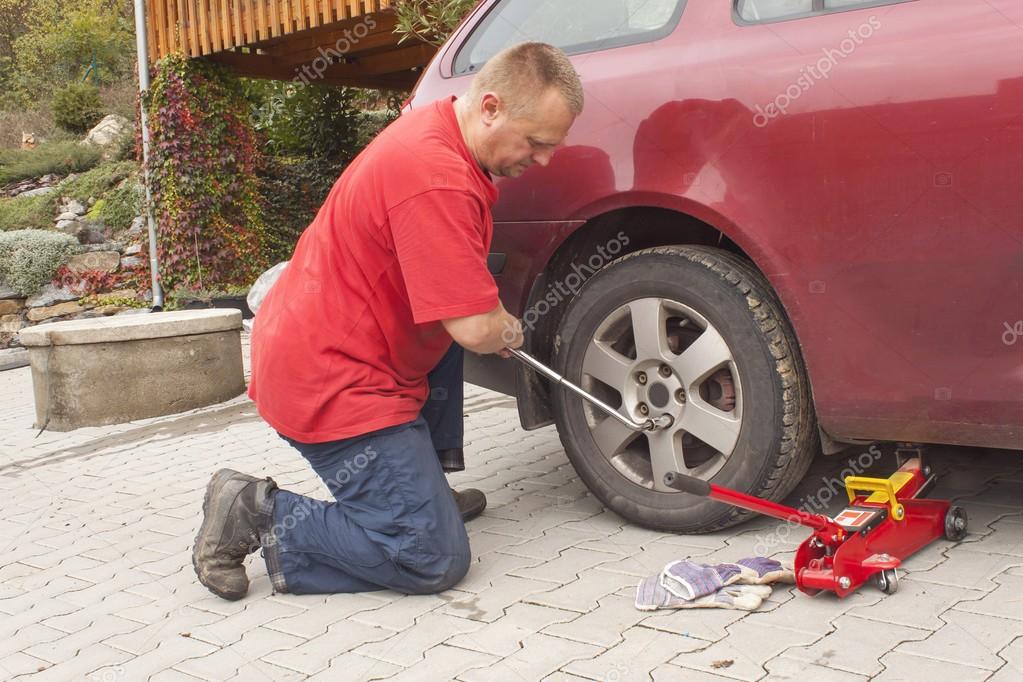
So as you can see, the full, official way to patch a tire is quite involved. This is why you can see prices up to $45.00 for a simple patch.
If the tire has to be rebalanced, that’s around $13.00 and if it needs new valve stems, or a TPMS sensor, this can also tack on extra costs.
This patch is so effective that it saves you from having to purchase a new tire. You can enjoy the full length of the tire as if no puncture ever happened. Patching a tire can be quite the life saver when you’re in a jam.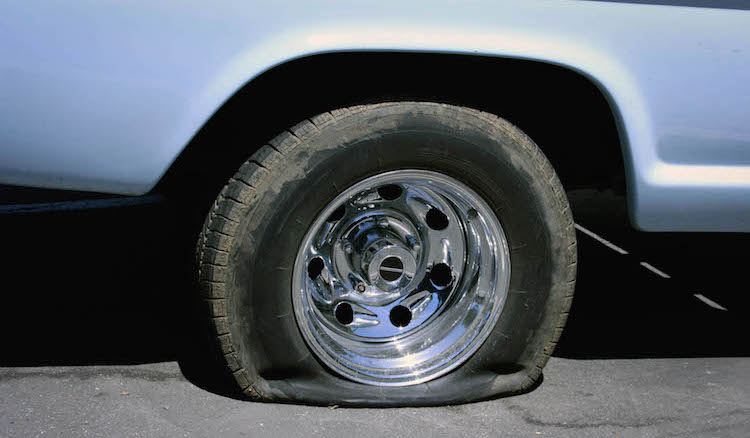
The obvious issue here is that tire machines aren’t commonplace in the average driver’s house. So doing it yourself this way isn’t really feasible, but the method we discuss next can be done almost anywhere.
Tire plugging is a simple fix applied to various types of tire punctures. The majority of tire punctures can be repaired by doing a plug yourself.
To plug a tire, just push the plugging strip with the T-Handle in as far as it will go. Then, with all your might, quickly pull the t-handle out. This will plug the tire, and all that’s left is for you to cut the excess plugging strip away.
Tire plugging is looked down by Tire Shops because they consider it not fully seal the surface. But I’ve plugged well over 500 tires, and have never had an issue. Most independent shops are fond of tire plugging as well, since it keeps prices down for them, and the customer.
Tire plugging can be done by yourself, in your driveway. If you don’t feel comfortable doing it, call up an independent shop and ask if they plug or patch tires.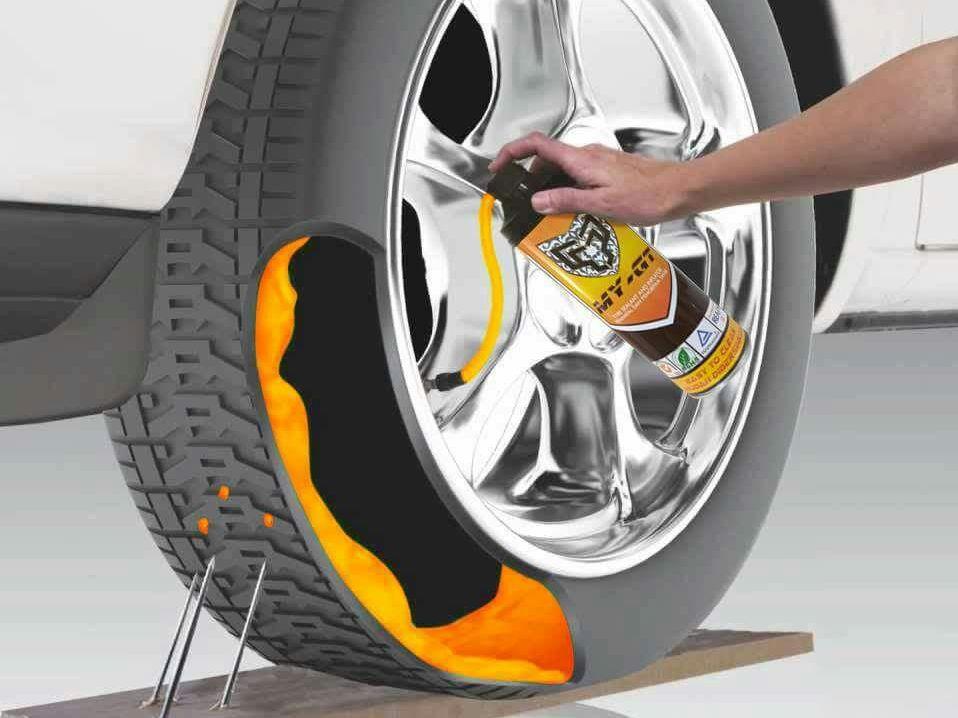 Most likely, they probably offer both, but they’ll charge half for a plug, compared to what they would for a full patch.
Most likely, they probably offer both, but they’ll charge half for a plug, compared to what they would for a full patch.
Plugging tires, while usually a simple task, can turn into a complex issue. For example, if you plug a tire, and you can still hear a slow hissing noise, it can be a pain to hunt down the source of the leak.
Or if you spray the whole tire down with soap in order to locate the leak, and can’t find it. You might start to question your sanity. Don’t! These issues can take up hours, even for master techs.
There’s actually a machine in some tire shops that puts the tire under water using a crane-like object from above. Even this machine still fails sometimes, and mechanics are left scratching their head. So if you start to encounter any issues of locating the leak, or plugging a leak, it’s time to take it to the shop.
If the tire is totally flat when you walk out to your car, you should be able to use your spare tire, and repair the issue at home with a plugging kit. But if you plug the tire, and it’s still leaking, take it to the shop and let them repair it.
But if you plug the tire, and it’s still leaking, take it to the shop and let them repair it.
If you are questioning the length test or edge test results, it’s also recommended that you take it to the shop. Some mechanics will say, “use double the amount of plugs”, to fix large gashes. This is wrong. If one plug can’t fix it, take it to the shop and see what you can recoup.
But for the majority of situations, where a nail has punctured your tread somewhere in the middle of the tread face, it’s totally acceptable to purchase a plug kit, and do the repair yourself. It will save you a couple bucks, and you will have had the opportunity to go under your car to do a quick visual inspection. Or take off the tire and glance at the brake pads.
Tire patching is a method to restore the original appearance of the wheel part. People use the patch method because their car does not have too big a problem, and they just need to perform small tips to save the budget.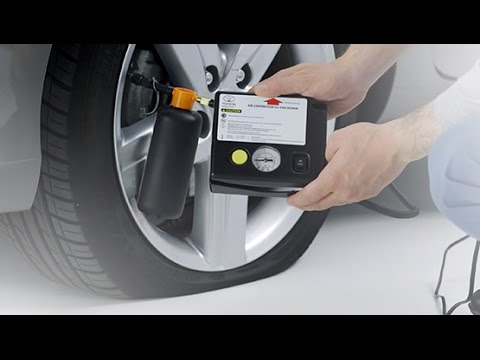
However, not everyone is good at this, and the best solution for them is to seek the help of repair shops. So, how much does it cost to get a tire patched?
This task will cost you between $5-$20, depending on the severity of the tear. Of course, some shops will give you free if you buy their replacement tires!
Why Do Tires Go Flat?The process of moving is subject to many external forces, causing the tires to deflate. The cause comes from many sides, but it is not a coincidence.
There are three ways to explain this phenomenon:
When it meets the right, less durable sides, it will puncture the tire, and the gas leak occurs the next day. However, the process will take a long time, depending on how severe the object has been.
Can we take this as another way of stating protection? It’s not too difficult to do; even with just being meticulous, you have adequately protected your tires. Here are three measures to refer to:
Checking dailyRegularly taking your tires in for maintenance is the best way to protect your car. Here, the tires and the whole as a whole will be to detect potentially harmful problems and then provide solutions to protect and eliminate the risk.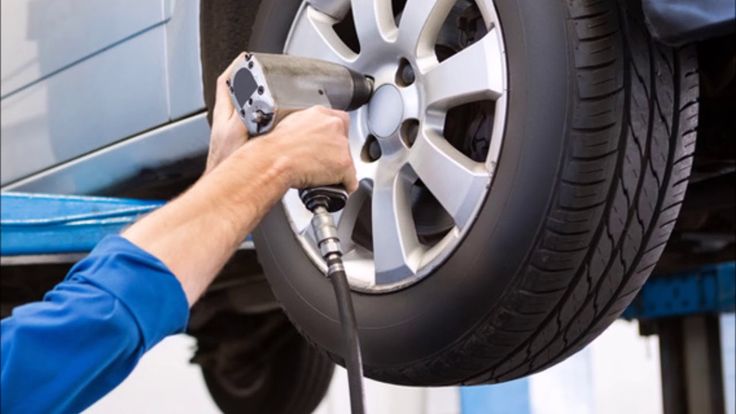 As for the tire, it will be to look for wounds, thereby limiting deflation.
As for the tire, it will be to look for wounds, thereby limiting deflation.
Although it is difficult to guarantee that it is 100% avoidable, try to keep the collision rate as low as possible.
When entering a road with signs under construction or places full of potholes, you should adjust your driving speed, carefully look at the road, and make sure the tires do not encounter dangerous objects.
Track tire recallsAlthough the manufacturing process of the auto industry is always rigorous, there are also shipments with incorrect specifications that cause dangers when used. You should follow the brand to know more about recalls, if any.
Is Tire Stickers Possible?It’s up to you whether you want to use a gluing service. Don’t confuse gluing with car patching. The meaning of the word “patch” is clearly as a measure to repair wounds and holes that make the car unable to operate. As for gluing tires, paste the letters on the wheel body to increase aesthetics.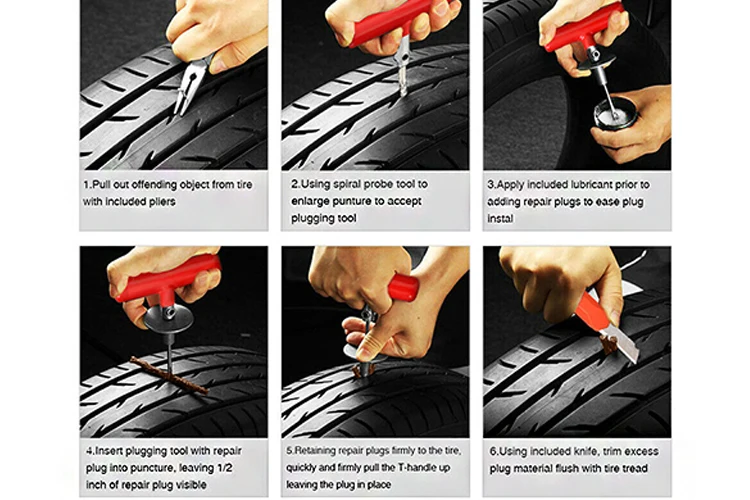
It does not have any effect in protecting the wheel body. Although manufacturers do mention the longevity feature of long-lasting tires, it’s important to remember that there’s too much to decide whether the wheel or running tire itself will last a long time.
How Much Does It Cost To Get A Tire Patched?The cost depends on the selected maintenance center; the amount of this service is not uniform. But the number is not too expensive, ranging from $30-40$ for a patch.
A mechanic takes 15 minutes to remove the tire from the rim to find the leak and 20-30 minutes for the repair and finishing work.
Although the job is not too difficult, it requires a high level of skill, so for some shops, the price to fix the car can be higher than $5-10$. You can also buy the equipment and repair it yourself. But honestly, we don’t recommend this.
What If You Can’t Use The Tire Patch?In case you cannot repair the patch, then bring it to the center for support. There, they will have specialized tools and professional ways to ensure safety after patching. Mastering knowledge and experience is always good in all situations, primarily related to security.
There, they will have specialized tools and professional ways to ensure safety after patching. Mastering knowledge and experience is always good in all situations, primarily related to security.
Wheels always need to be in a stable gas state, and it helps maintain the movement and increase the ability to support the force. The gas pressure should not be too high or vice versa.
When the air in the wheel is too low, the speed of travel slows down, and the tires cannot overcome obstacles, especially rough roads.
But if it’s too tight, it will explode because it can’t handle operation pressures well. The primary advice is to use a dedicated gas pressure gauge to catch and control the gas in the wheel well.
Tire rotationPeriodically try to rotate the tire to prolong its life and evenly distribute the wear on all four wheels. Regardless of whether you do it yourself or with professional help, this is an excellent opportunity to grasp the damage situation that the vehicle is facing.
There are indicators recommended to users in each one, including the load that the tire can withstand and the notes not to do.
To ensure safety, you should carefully read the notes and avoid carrying too many unnecessary items to put pressure on the body and the wheels.
Tire balanceExperts recommend that users balance the tires after traveling 12,000 miles or when the car has problems with the steering wheel.
The balance helps evenly distribute the force on all four tires, limiting rapid wear. It also eliminates vibration, creating a comfortable feeling for the user.
For more tips, watch this video:
ConclusionAbove is the knowledge related to the tire patching process or wheel maintenance. We hope that this knowledge can be helpful to you when you encounter similar situations. Do not hesitate to share the information with your family and friends because they may also need it.
We hope that this knowledge can be helpful to you when you encounter similar situations. Do not hesitate to share the information with your family and friends because they may also need it.
Is the article PERFECT for your needs? Do you have other useful knowledge? Please share with us via the comments below. We are happy to share with you!
Thank you for reading!
This post was last updated onAuthor: Aleksey Kokorin
Experienced drivers are not surprised by such a trifle as a puncture, but for the first time beginners usually get confused in the sequence of actions, forget about important details and do not know what to do with a punctured wheel even in a tire shop - especially if they start offering choose from several options or intimidate with expensive repairs. Let's set up an operation algorithm when a flat tire is detected and figure out what to do right away and what to choose later. nine0013
Let's set up an operation algorithm when a flat tire is detected and figure out what to do right away and what to choose later. nine0013
What to do when you find a puncture
Having found a flat tire, first of all you need to stop in a safe place, turn on the alarm, assess visibility and, if necessary, set an emergency stop sign: according to traffic rules, it is installed at least 15 meters from the car in the village and at least 30 meters outside the settlement. When choosing where to stop, consider the space to the side of the vehicle to handle a flat tire. You should not stop right on the road and in places where stopping and parking are prohibited: even if a punctured wheel belongs to the conditions of a forced stop, it is quite possible to drive several tens of meters on it to choose a safe and convenient parking place. At night or in conditions of limited visibility (for example, in fog or rain), it is imperative to wear a vest with retroreflective elements - this is required by clause 2.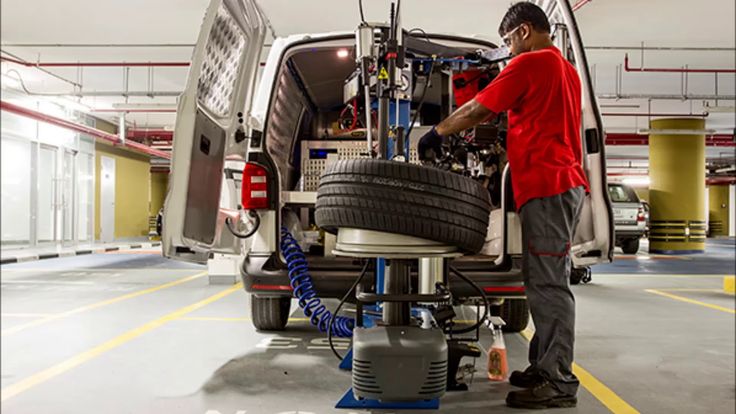 3.4 of the SDA and common sense. nine0013
3.4 of the SDA and common sense. nine0013
Now you can start working on the wheel. We will sequentially consider several options for action, and then move on to ways to repair a damaged tire.
The most obvious solution to a flat tire is to replace it. If you have a spare tire that you are sure is in good condition, the best option is to install it and visit a tire shop to repair a punctured tire - such repairs will be more reliable and of high quality than doing it yourself.
If you don't have a suitable spare tire, but you do have a pump or compressor, you can assess the damage to the tire and try to pump it up again to get to the tire shop. It is better to start searching for an air leak with a valve (aka “nipple” or “nipple”): often a faulty spool becomes the cause of a flat tire. It is easy to check it: unscrew the protective cap (if there is one), pour water on it (or slobber it, as in childhood): air bubbles will leak. In this case, you can try to replace the spool valve by unscrewing it and screwing in a new one, but if there is no new valve, as well as a store nearby, you can try just unscrewing and screwing it back in.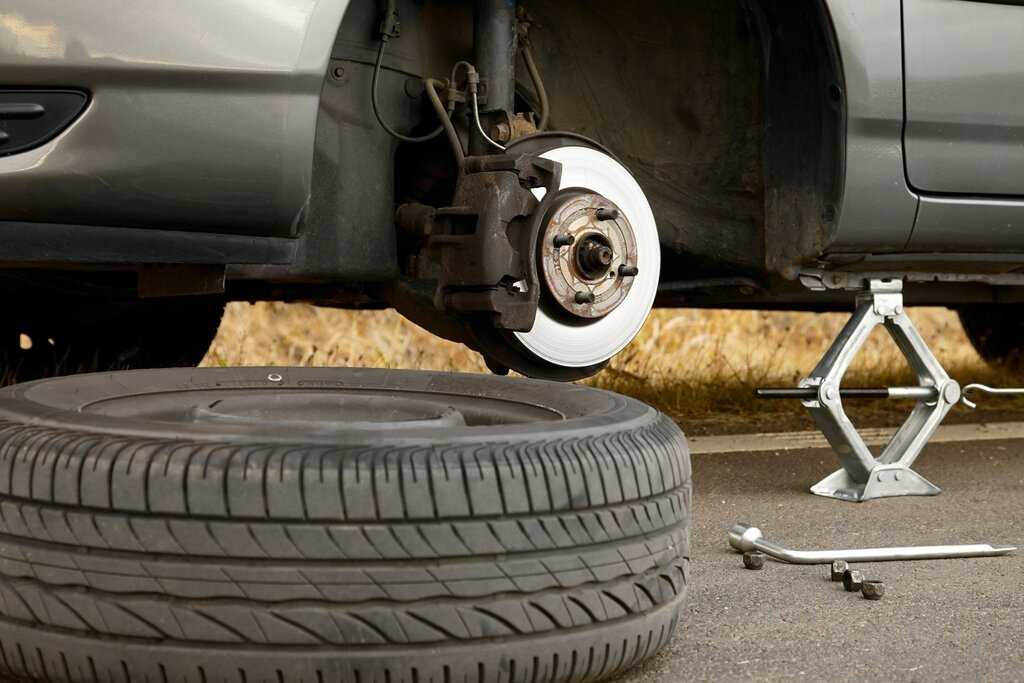 Regardless of whether it helped or not, you need to visit a tire shop to replace the entire spool or valve. nine0013
Regardless of whether it helped or not, you need to visit a tire shop to replace the entire spool or valve. nine0013
If the valve is tight and the tire is flat, it is most likely a puncture. The easiest way to find a puncture that is free of foreign objects is to pour water on the tire while looking at the surface: the damage will reveal itself as air bubbles. However, often the cause of the puncture can be found along with it: a self-tapping screw, nail or other arbitrary object sticking out of the wheel will clearly indicate the place of depressurization. In this case, you do not need to immediately remove the foreign object from the tire: it partially seals the hole, and if the pressure loss is slow, you can try to pump up the wheel and drive to the tire shop. nine0013
The same goes for wheels that are leaking from the rim or from a faulty valve. Usually, in this case, the air is bled slowly, and you can pump up the wheel and have time to get to the place of repair.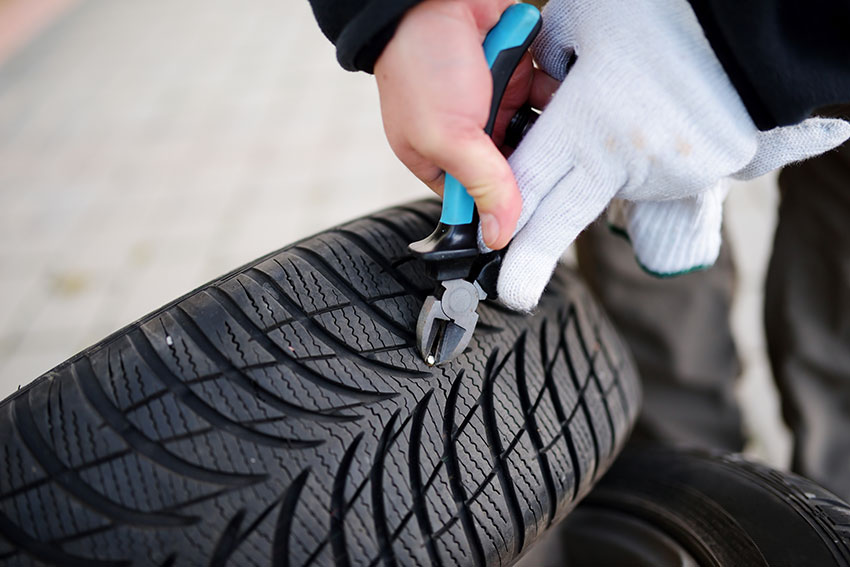 By the way, rim leakage can occur due to disk deformation upon impact - for example, when hitting a pit with sharp edges. Such situations are fraught with damage to both the disk and the sidewall of the tire, in which case the disk will need to be corrected, and the tire repaired or even replaced. To avoid rim leaks, you need to inspect the rims every time you change tires. The loss of tightness occurs either due to corrosion or due to disc deformation, and not only steel, but also light alloy wheels can corrode. So if you see paint blistering or rust on the rim, the tires need to be put on rim sealant: when changing tires, this will be cheaper than the subsequent removal and re-tire to fix a leak on the rim. nine0013
By the way, rim leakage can occur due to disk deformation upon impact - for example, when hitting a pit with sharp edges. Such situations are fraught with damage to both the disk and the sidewall of the tire, in which case the disk will need to be corrected, and the tire repaired or even replaced. To avoid rim leaks, you need to inspect the rims every time you change tires. The loss of tightness occurs either due to corrosion or due to disc deformation, and not only steel, but also light alloy wheels can corrode. So if you see paint blistering or rust on the rim, the tires need to be put on rim sealant: when changing tires, this will be cheaper than the subsequent removal and re-tire to fix a leak on the rim. nine0013
If you find a puncture, but there are no foreign objects in it, and you do not have a spare wheel and tire repair kits, there is another popular method of temporary "repair". You can screw a self-tapping screw into the found hole - if, of course, you have one. In extreme cases, you can look for a self-tapping screw in the cabin by unscrewing it from some interior detail. This method cannot be called reliable: it is unlikely to ensure complete tightness of the wheel, but at least it can help you get to the nearest tire shop. nine0013
This method cannot be called reliable: it is unlikely to ensure complete tightness of the wheel, but at least it can help you get to the nearest tire shop. nine0013
And a couple more useful remarks. If the wheel is completely flat, then it is easier to inflate it without a spool: the latter must be unscrewed, then the tire must be inflated and quickly screwed back in. The fact is that the spool itself, when inflated, resists the compressor, and in the event of a loose fit of a flat tire to the disk, the power of a simple magazine compressor may not be enough, and the absence of a spool helps to increase air flow and facilitate the operation of the compressor. If this does not help, you can jack up the car by hanging a flat tire: this will improve the fit of the tire to the disk, and the chances of inflating the tire will increase. nine0013
On-Site Repair Methods
Now let's look at options for repairing a tire yourself using special materials that you should carry with you or, if a puncture caught you in the city, buy it at the nearest auto shop.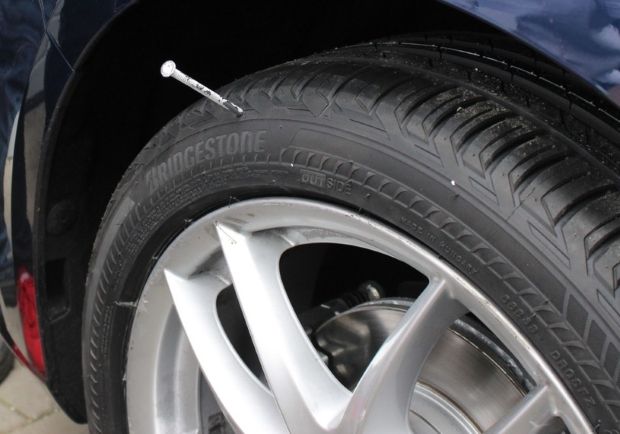
1. The most common, cheapest and easiest way to do it yourself is to install a raw rubber band. The harnesses are sold complete with an abrasive awl to expand the hole in the tire and improve the contact of the repair harness with its edges, as well as a needle for installing the harness and an adhesive to fix it and at the same time seal the puncture. When choosing a repair kit in a store, you should pay attention to the following nuances:
Install the harness in the following order. First, the found hole is expanded with an abrasive awl - you need to insert and remove it several times into the puncture site. Then the tourniquet is inserted into the eye of the needle, and glue is applied to it.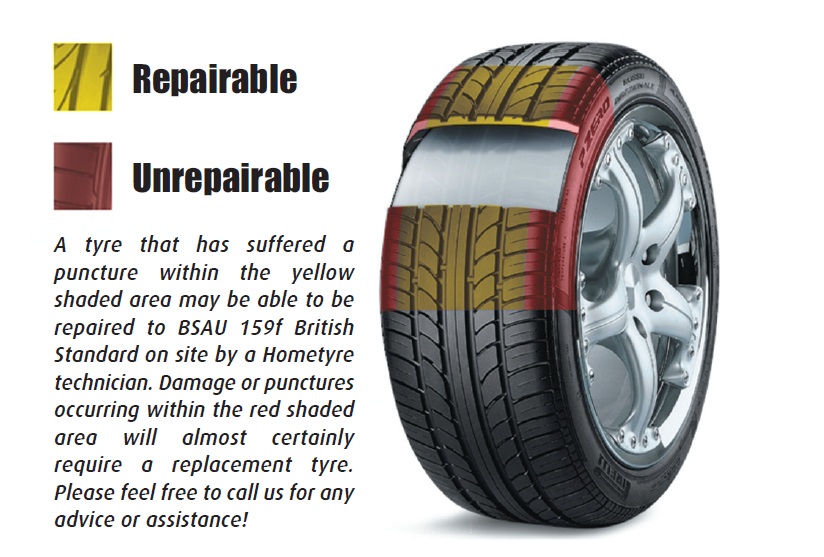 After that, the needle with the tourniquet must be inserted into the hole in the tire and pulled out sharply - so that the tourniquet remains in the hole, and the needle comes out without it. If everything worked out, it remains only to cut the end of the harness flush with the surface of the tire and pump up the wheel. nine0013
After that, the needle with the tourniquet must be inserted into the hole in the tire and pulled out sharply - so that the tourniquet remains in the hole, and the needle comes out without it. If everything worked out, it remains only to cut the end of the harness flush with the surface of the tire and pump up the wheel. nine0013
The advantages of repairing with a harness are quite decent reliability, simplicity and low cost. On a well-repaired tire, you can drive for a long time, and if the repair site starts to poison, you can either replace the harness or have the tire repaired in a quality service. Among the minuses is the possibility of damaging the cord during installation, as well as lower reliability compared to “full-fledged” repair methods in a tire shop. Strictly speaking, a tourniquet is still a temporary repair, so if it is possible to pump up a wheel and get to a tire fitting, then it is better not to enlarge the hole in the tire and get to the experts. nine0013
2.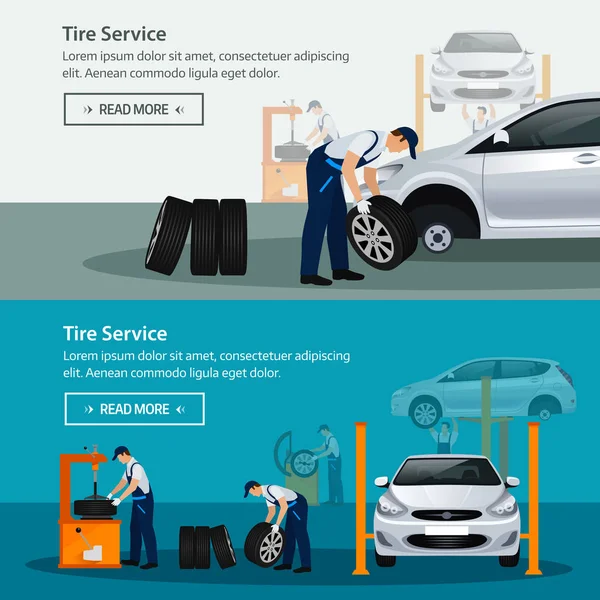 The second repair option is aerosol liquid sealants sold in cans. To repair a punctured tire with sealant, you need to remove the foreign object from the puncture site, then pour the sealant into the wheel through the valve, twist it to distribute the composition inside the tire, pump up the wheel and drive several kilometers at low speed for the final uniform distribution of the sealant.
The second repair option is aerosol liquid sealants sold in cans. To repair a punctured tire with sealant, you need to remove the foreign object from the puncture site, then pour the sealant into the wheel through the valve, twist it to distribute the composition inside the tire, pump up the wheel and drive several kilometers at low speed for the final uniform distribution of the sealant.
Among the advantages of this repair is the simplicity and less labor intensity compared to installing a harness. However, there are also disadvantages: the larger the hole, the higher the chance that the sealant will not be able to eliminate it, and such a repair can affect the wheel balance. Compared to a tourniquet, it can be considered even less reliable and preferable, but simpler. nine0013
Repair options at a tire shop
If you put on a spare tire and brought the wheel to a tire shop, you may also be offered several repair options. Consider the most popular with an indication of the advantages and disadvantages.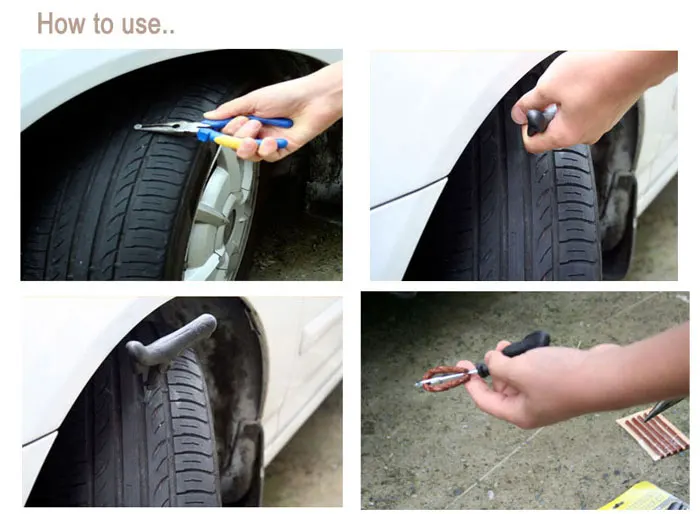
1. The first repair method is the same harness installation as described above. As we remember, the tourniquet refers to a temporary repair, so among tire specialists this method is considered bad form, but many workshops do not exclude it from the list of services. All the advantages and disadvantages are the same here: such a repair will be the fastest, simplest and cheapest, but less reliable than other methods. It is worth choosing it in cases where the price and / or speed of the procedure is more important to you than anything else. If quality is a priority, then it is better to fork out for the options listed below. nine0013
2. The second option for repairing a puncture is to install a patch on the inside of the tire, the so-called cold vulcanization. In this case, the tire is removed from the disk, the surface around the puncture is treated with an abrasive, and the damage is sealed with a special patch. This is a more preferred repair method than a tourniquet: it is more reliable and durable, especially in the case of side punctures, when not the thick tread part of the tire is damaged, but the thinner sidewall.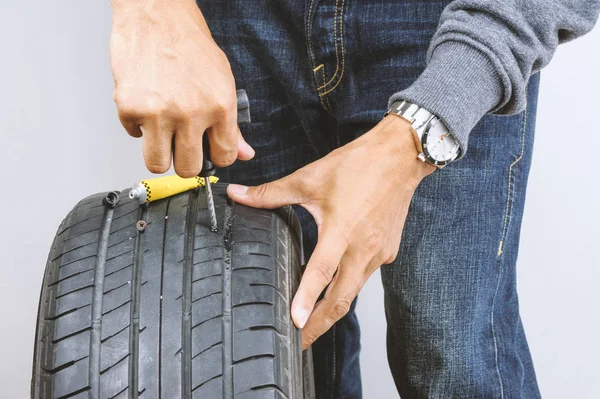 Among the minuses, only a higher cost can be noted: in addition to the actual tire repair, you will have to pay for the removal and installation of the wheel (or do it yourself), tire fitting and balancing. nine0013
Among the minuses, only a higher cost can be noted: in addition to the actual tire repair, you will have to pay for the removal and installation of the wheel (or do it yourself), tire fitting and balancing. nine0013
3. The third option is a "complex" of the first and second: installation of the so-called repair "fungus". The “hat” of the fungus is a patch, and the “leg” is threaded from the inside of the tire to the outside. After gluing the patch, the excess part of the leg is cut off, as in the case of the tourniquet. Thus, not only the inner surface of the tire is closed, but also the hole itself. The advantages and disadvantages of this repair method are generally the same as those of a patch.
4. An extreme, “emergency” measure when repairing a punctured wheel is to install a camera in it. Typically, this method is used for tires that are no longer worth repairing, or “for reliability” after repairing a complex puncture. It should be understood that almost all modern tires are tubeless, that is, they are not designed to install a camera, so it’s not worth driving a wheel repaired in this way for a long time.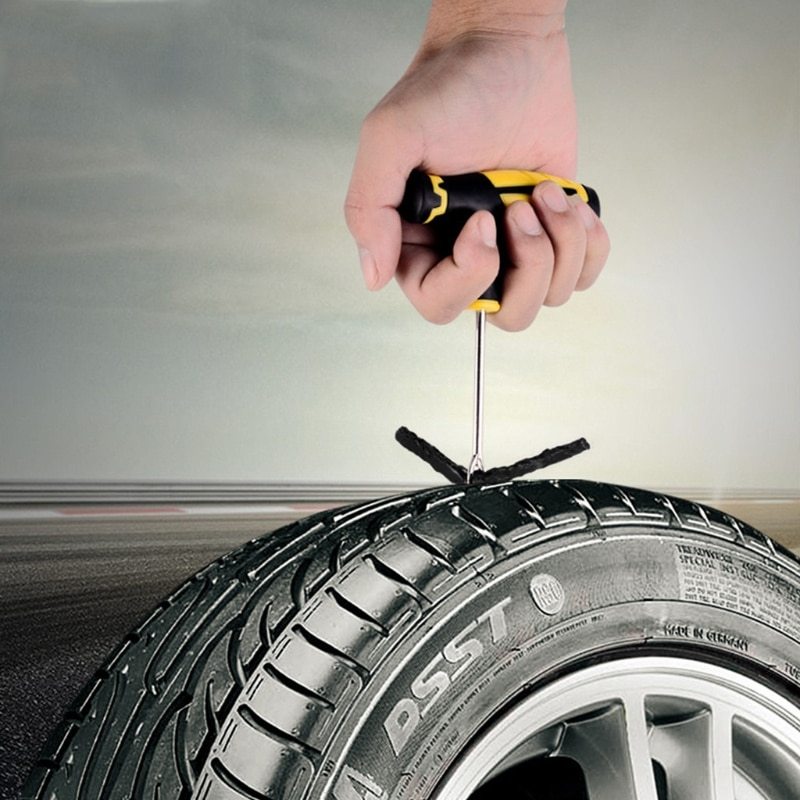 Installing a tube is a temporary solution for riding until a new tire is purchased, and sometimes such wheels are left as spares. So this repair method can be kept in mind as a backup. nine0011
Installing a tube is a temporary solution for riding until a new tire is purchased, and sometimes such wheels are left as spares. So this repair method can be kept in mind as a backup. nine0011
Finally
We have deliberately left out of this text such methods as combined repair of tires with a tourniquet and a patch and hot vulcanization. The first is used quite rarely and for specific damage, and it is enough just to know about its existence. Well, the second is used to repair serious side cuts, and it is not only rare, but also very expensive. The cut site in this case is prepared, filled with raw rubber and processed with a hot press for vulcanization. Equipment for this procedure is not available in every tire shop, and the cost of repair can be about half the cost of a new tire. nine0013
interesting popular questions
Articles / Interesting 5 Reasons to Buy and Not to Buy a Honda Civic IX Honda in general, and the Civic in particular, have a mixed reputation.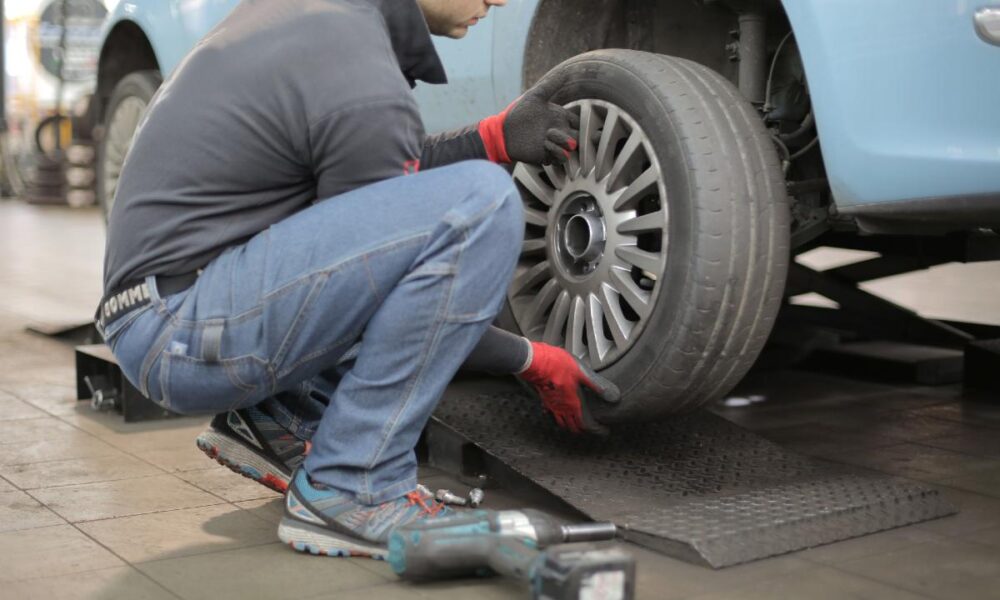 It seems that the car does not break down too often, but the cost of maintenance seems to many to be too high. Looks good, but... 772 0 2 12/18/2022 nine0011
It seems that the car does not break down too often, but the cost of maintenance seems to many to be too high. Looks good, but... 772 0 2 12/18/2022 nine0011
Articles / Statistics Air Filter Index: 2022 results Since mid-spring, we have been watching the price changes for basic consumables, oils, tires and some rare parts. Time to take stock of the year and give a cautious forecast for 2023. Spoiler: there is x... 686 0 one 12/17/2022 nine0011
Articles / Practice No need to save: why ignition coils fail too quickly We have already written a lot about how to properly operate a car in winter, and how to determine why the engine suddenly began to "troit", and how different types of ignition coils are arranged, and even how to replace . .. 1552 0 2 16.12.2022 nine0011
.. 1552 0 2 16.12.2022 nine0011
Test drives / Test drive Haval Dargo vs Mitsubishi Outlander: the dog is barking, the stranger is coming In the Haval dealership in the south of Moscow, life is in full swing: buyers look at cars, communicate with managers and sign some papers. While I was waiting for the test Dargo, the same cross... 19364 7 205 13.09.2022
Test drives / Test drive Motor from Mercedes, emblem from Renault, assembly from Dacia: test drive of the European Logan 1.0 It would seem that what's new can be told about the second generation Renault Logan, known to every Russian taxi driver, as they say, up and down? However, this car has. .. 15253 10 41 08/13/2022 nine0011
.. 15253 10 41 08/13/2022 nine0011
Test drives / Test drive Geely Coolray vs Haval Jolion: Free Cheese? If! Do you want to buy a car today with a full warranty, on credit at an adequate rate, without wild dealer markups? Now this is still a task, because a full-fledged chain of "representation - s... 12680 26 thirty 08/10/2022 nine0011
Skip to content
Tire replacement St. Petersburg at an authorized dealer at competitive prices.
We give a 40% discount for the first visit!
When you contact the Elan-Motors car service center with a request to change tires, you get an invariably excellent result, as inexpensively and quickly as possible. If tire fitting is done professionally, it can significantly contribute to the economy and safety of the car. nine0011
If tire fitting is done professionally, it can significantly contribute to the economy and safety of the car. nine0011
The decision to use the services of "Elan-Motors" for tire fitting will give you many additional benefits. We will perform professional diagnostics to accurately determine the condition of tires. If a replacement is required, we provide personalized, responsible tire recommendations.
We are well aware that customers require a different balance of quality and price, so we will select only the ideal option for your machine. It is not worth saving in such a case, since tires of a lower standard wear out faster and can even cause unforeseen circumstances while driving. nine0011
We are also committed to excellence in tire placement. It is important to ensure that your vehicle has four identical tires, or at least one identical pair on each axle. During the fitting, we can recommend fitting the best tires to the front axle, as this is where the most wear occurs.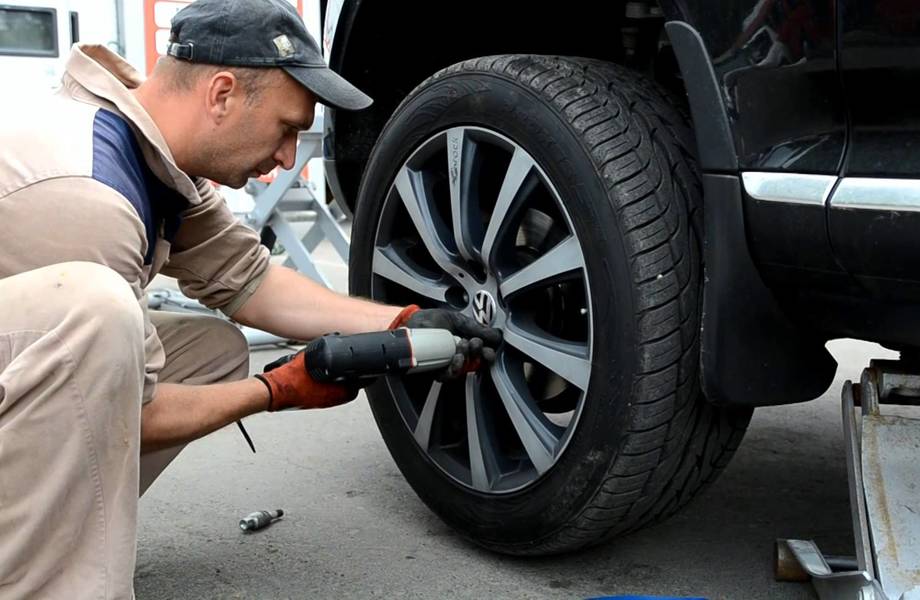
The most obvious sign that you need a tire change is an excessively worn tread. You can evaluate this yourself, for example, by inserting a coin into the grooves at different points on the surface, and then compare the result with the manufacturer's official recommendations. You need to do this about once a month. nine0011
However, nothing can replace a professional opinion, so come and see us if you have even the slightest doubt. We use state-of-the-art technology to accurately determine tread wear.
You should also watch for cracks in the tire walls. Even the advanced compounds used in today's products lose their properties over time.
Naturally, if you find any holes, cracks, bulges or objects stuck in the rubber while inspecting the tire, in all these cases you should contact us. Likewise, if the tire has been left flat for longer than necessary, we also recommend using our services. nine0011
Today, drivers change tires on a seasonal basis.